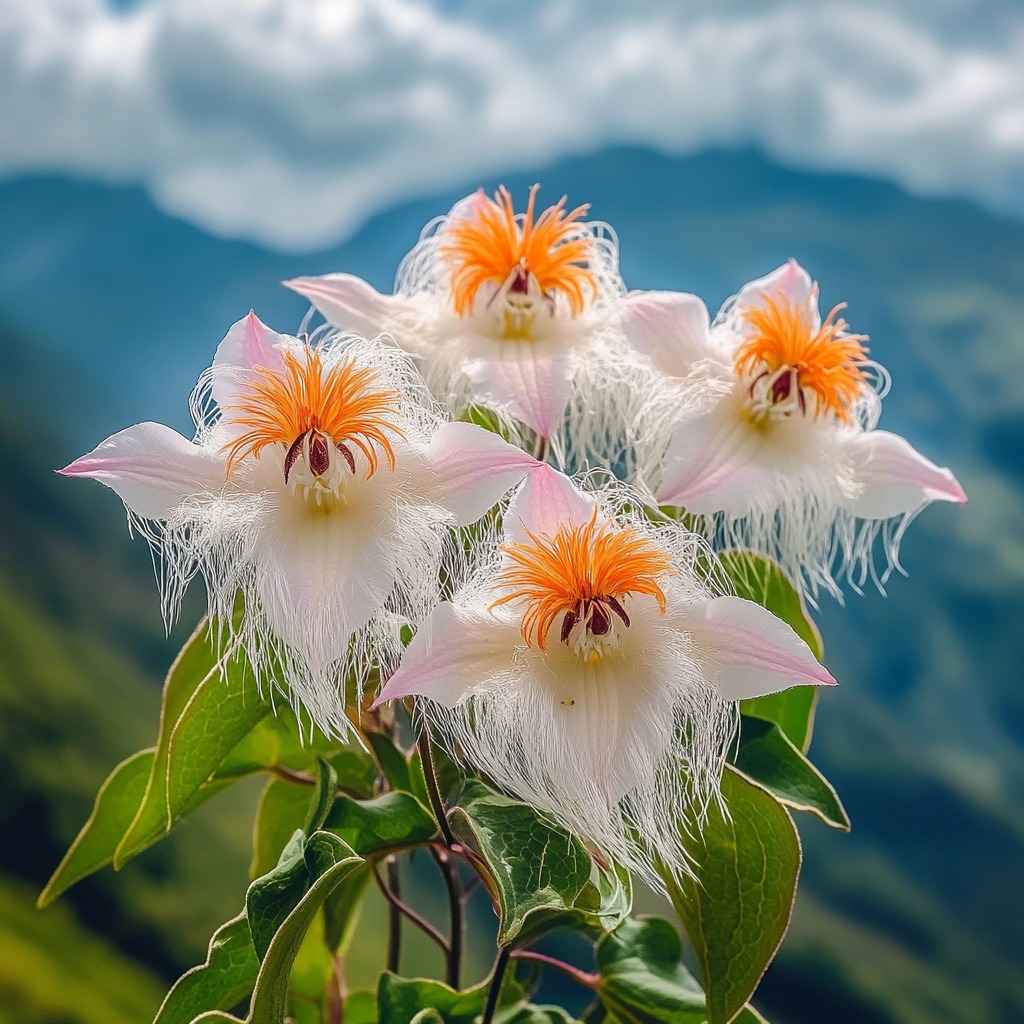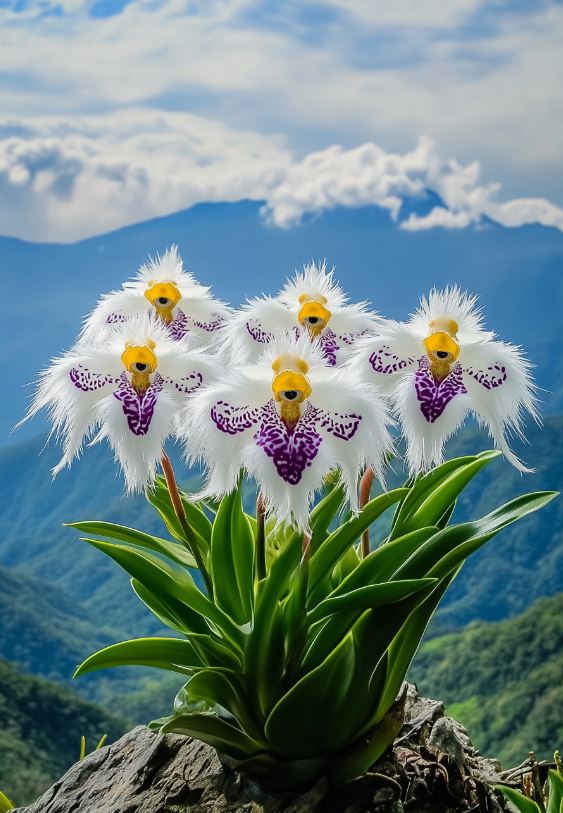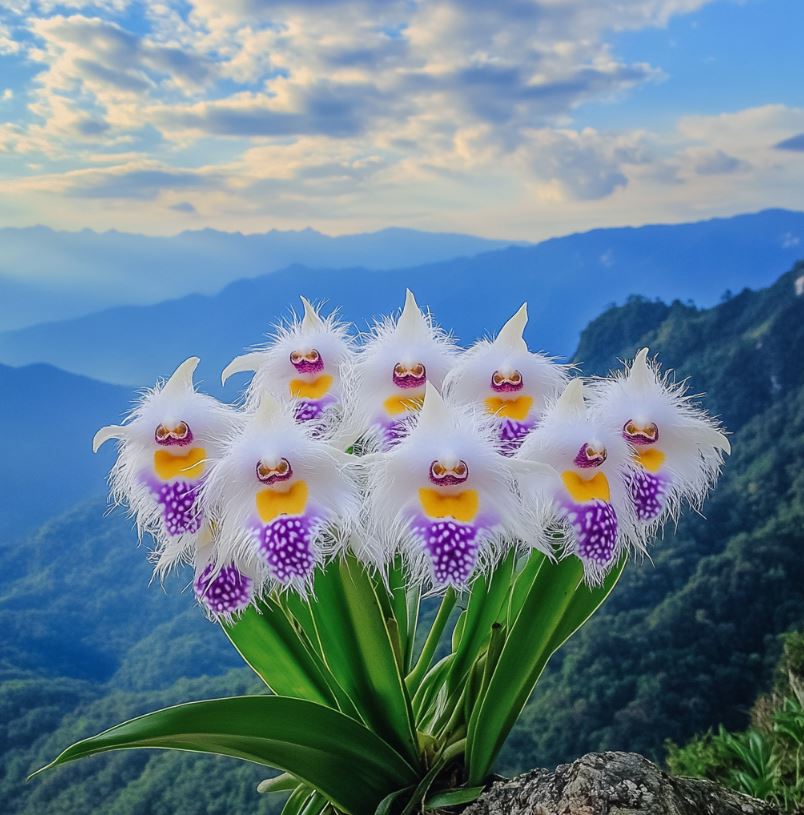The Monkey Face Orchid, scientifically known as Dracula simia, is not merely a botanical curiosity but an invitation into the whimsical realm of nature’s artistry. These epiphytic orchids, initially classified under the genus Masdevallia, beckon attention with their remarkably detailed blossoms that evoke the visage of playful, mischievous monkeys. This remarkable resemblance is more than skin deep; it speaks to the diversity and adaptability of life forms in ecosystems—especially those like cloud forests where these orchids flourish. The unique morphology, characterized by its unmistakable arrangement of petals, column, and lip, serves both functional and aesthetic purposes, enabling it to attract specific pollinators while captivating the human imagination. In exploring Dracula simia, one might ponder the implications of such evolutionary traits—do they serve merely to entice bees and other pollinators, or is there a deeper philosophical reflection on the interconnectedness of species and the symbiosis inherent in ecological systems?

Ecological Significance
At first glance, the whimsical appearance of the Monkey Face Orchid might simply be endearing, yet it plays a critical role in biodiversity. Found primarily in the misty montane forests of Ecuador and Peru, this orchid is exemplary of the rich biological tapestry woven within these delicate ecosystems. The existence of Dracula simia highlights the fragile interdependencies of flora and fauna, offering vital insights into pollination mechanisms and adaptation strategies in response to environmental changes. For example, the peculiar shapes of its flowers lead specialist pollinators, which may include certain species of butterflies and bees, to engage with the plant more intimately, thus ensuring successful reproduction. This web of interaction can act as a bellwether for environmental health, showcasing how these charming flowers remain at the heart of ecological balance.

Cultural Fascination
Beyond its biological significance, the allure of the Monkey Face Orchid extends into human culture, often becoming a conversation starter among horticultural enthusiasts and gardeners alike. Its unique appearance has spurred curiosity and creativity, inspiring artists, writers, and naturalists who see in the flower not only beauty but also a fanciful interpretation of nature’s ability to conjure smiles through curious forms. For instance, consider the analogy of a painter using unusual colors—how such decisions can provoke thought and emotion. Just as an unexpected splash of color makes us reconsider our perceptions, Dracula simia invites observers to rethink what beauty can be. It encapsulates wonder, humor, and intrigue, perhaps encouraging a more profound appreciation for the natural world, and ultimately urging a reconnection that many of us have lost in our urbanized lives.

Care and Cultivation
However, nurturing this enigmatic orchid requires knowledge and dedication, as it is quite particular about its environmental conditions. Unlike typical houseplants, the monkey orchid thrives in cool, humid environments, mimicking its native habitat high in the Andes. As one delves into cultivation techniques, parallels to tending other intricate relationships in life may emerge—whether dealing with friendships, career growth, or personal goals, success often lies in understanding and meeting the nuanced needs of others. When learners immerse themselves in the care requirements of Dracula simia, they come to terms with patience, attentiveness, and the willingness to adapt, resonating beyond horticulture into broader life lessons. Each blooming flower becomes a symbol of toil and reward, weaving together themes of effort and interconnectedness that define human experiences.
Thus, the Monkey Face Orchid serves as more than just a fascinating spectacle; it emerges as a powerful metaphor for exploring relationships, conservation, and the vitality of shared ecosystems between humans and nature. Through its existence and the stories it inspires, we are reminded of the intricate dance of life—where every step counts, and every encounter leaves a mark.




